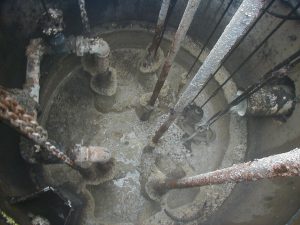Blog, Case Studies
Odor Control in Collection Systems
Foul odors in collection systems are commonly caused by either Hydrogen Sulfide (H2S) or Fats, Oils, and Greases (FOG). Click on the links below to learn more about how to control odors in a natural and economical way.
White Paper: “Microbial Odor Control in Sewage Transport and Treatment”
This white paper explains the sources of odor causing agents in sewage collection systems and how the natural process of bioaugmentation can reduce odors in wastewater collection systems and treatment plants.
White Paper: “FOG Biodegradation”
This white paper explains the science behind bioaugmentation, and how this natural process can break down FOG to prevent odors, clogging and maintenance issues in collection systems.
Case Study BSE120 “Grease Trap FOG Reduction in Fried Chicken Chain Restaurant”
This case study profiles a popular fried chicken restaurant chain that generates high levels of FOG. The study shows that using microbial products reduced the FOG discharge from 428 mg/l to 65 mg/l. This reduction allowed them to meet their government-mandated FOG sewer discharge requirements.
This three-year case study evaluates the effectiveness of using microbial products for Hydrogen Sulfide control and compares the cost with a nitrate chemical program. The study showed that H2S was reduced to less than 10ppm 95% of the time. The cost of the program was 41% less than the nitrate chemical program, which saved them over $28,000 per year. The program also had additional benefits downstream at the WWTP including reduced oxygen demand (BOD), improved solids settling (lower sludge volume index), and reduced odor.
